√100以上 e coli cell wall 109806-Escherichia coli cell wall peptidoglycan
Causes Only a few strains of E coli trigger diarrhea The E coli O157H7 strain belongs to a group of E coli that produces a powerful toxin that damages the lining of the small intestine This can cause bloody diarrhea You develop an E coli infection when you ingest this strain of bacteria Unlike many other diseasecausing bacteria, E coli can cause an infection even if you ingestThis essentiality has made its biogenesis a fruitful target for antibiotics, including vancomycin and penicillinThe cell wall is directly exposed to the extracellular milieu in Grampositive bacteria, but is shielded in Escherichia coli and other Gramnegative species by a highlyEscherichia coli have strainspecific O lipopolysaccharide antigens on their cell wall (at least 1 O antigens are currently recognized) and flagella or H antigens if present (at least 53 H types are recognized) There are also numerous different capsular polysaccharide (K) antigens

Outer Membrane Permeabilization By The Membrane Attack Complex Sensitizes Gram Negative Bacteria To Antimicrobial Proteins In Serum And Phagocytes Biorxiv
Escherichia coli cell wall peptidoglycan
Escherichia coli cell wall peptidoglycan-Cocultured methylene bluesupplemented agarplate assay indicates that rough lipopolysaccharides might be playing a key role in S boulardii cell wall damage When experiments are repeated with lipopolysaccharidedepleted E coli and also lipopolysaccharidedeficient E coli, adhesion decreases substantiallyAlthough the E coli cell wall normally maintains a cylindrical shape during exponential growth , the cell shape can be altered either genetically or environmentally E coli mutants lacking the high molecularweight PBP2, a transpeptidase, swell up to resemble spheroplasts ( 16 ), while cells lacking the low molecularweight PBPs 5 and 7 are often branched with 3 or more poles ( 17 , 18 )



The Outer Membrane Is An Essential Load Bearing Element In Gram Negative Bacteria Nature
Gramnegative bacteria such as Escherichia coli are surrounded by an outer membrane, which encloses a peptidoglycan layer Even if thinner than in many Grampositive bacteria, the peptidoglycan in E coli allows cells to withstand turgor pressure in hypotonic medium In hypertonic medium, E coli treated with a cell wall synthesis inhibitor such as penicillin G form walldeficient cellsLysis of a dividing pair of E coli cells in the presence of a betalactam antibiotic Some beta lactam antibiotics, such as ampicillin and cephalosporin, are effective in the treatment of meningitis caused by strains of E coli (above) The beta lactam antibiotics prevent cell wall synthesis and assembly in the bacteriumInstead, their genetic material floats uncovered
Protein denaturation also is consistent with observations that alcohol destroys the dehydrogenases of Escherichia coli 486, it denatures proteins, disrupts the cell wall permeability, and oxidizes sulfhydryl and sulfur bonds in proteins, enzymes, and other metabolites 654 Top of PageK antigens) These polysaccharides are synthesized at the cytoplasmic membrane of the bacteria;The Gramnegative bacterial cell wall has a thin peptidoglycan layer that is found above the plasma membrane making about 5% of the cells dry weight Some bacteria like E coli have 2nm thick peptidoglycan (23 sheets of peptidoglycan) The Outer Membrane and the Lipopolysaccharides
In E coli, the pentapeptide coming off the NAM is composed of the amino acids Lalanine, Dglutamic acid, mesodiaminopimelic acid, and two Dalanines The outer membrane of the Gramnegative cell wall appears as a lipid bilayer about 7 nm thick It is composed of phospholipids, lipoproteins, lipopolysaccharides (LPS), and proteinsThe size of the 'pores' in the cell walls of B subtilis and E coli were near identical The E coli cell wall was equally porous as the B subtilis cell wall Diffusing in various sized fluorescent dextrans fig 3 A) An image of sacculi created for the purpose of the experiment, observed using light microscopyEffect of cold plasma on the E coli cell wall and plasma membrane Article in Russian Kobzev EN, Kireev GV, Rakitskiĭ IuA, Martovetskaia II, Chugunov VA, Kholodenko VP, Khramov MV, Akishev IuS, Trushkin NI, Grushin ME The effect of cold plasma on E coli cells was studied It was shown that the treatment of E coli cells with cold plasma



Pin On Science


Differential Actions Of Chlorhexidine On The Cell Wall Of Bacillus Subtilis And Escherichia Coli
Different methods are used for the preparation of cell lysates from E coli cells Sonication Sonication is the most popular technique for lysing small quantities of cells (16 L of cell culture) Cells are lysed by liquid shear and cavitation DNA is also sheared during sonication, so it is not necessary to add DNase to the cell suspensionIn the case of E coli, which has a very thin (∼3 nm) cell wall , it is easy to conceptualize a mechanism for stored growth that depends on insertion of unextended wall material , whereas in plants, which have a much thicker cell wall (>100 nm) , the proposed mechanisms of storing growth are more speculativeFIG 1 Incorporation of new cell wall in differently shaped bacteria Rodshaped bacteria such as B subtilis or E coli have two modes of cell wall synthesis new peptidoglycan is inserted along a helical path (A), leading to elongation of the lateral wall, and is inserted in a closing ring around the future division site, leading to the formation of the division septum (B)



A Novel In Vivo Cell Wall Labeling Approach Sheds New Light On Peptidoglycan Synthesis In Escherichia Coli Olrichs 11 Chembiochem Wiley Online Library
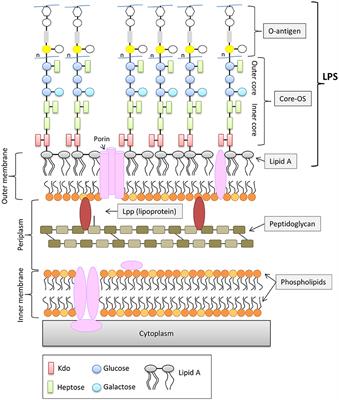


Frontiers The Role Of Outer Membrane Proteins And Lipopolysaccharides For The Sensitivity Of Escherichia Coli To Antimicrobial Peptides Microbiology
Bacterial Cell wall Structure, Composition and Types Cell wall is an important structure of a bacteria It give shape,rigidity and support to the cell On the basis of cell wall composition, bacteria are classified into two major group ie Gram Positive and gram negative Types of cell wall 1 Gram positive cell wall Cell wall composition ofThe LPS are transported to the outer membrane, where they reside, whereas the PS are secreted into capsulesSince the cell wall is the target of most antibiotics, understanding how bacteria grow their cell walls may provide insight into more effective medicines Now, a team of researchers led by the Harvard John A Paulson School of Engineering and Applied Sciences (SEAS) has found that Escherichia coli (E coli) may use mechanical cues to keep their



Muropeptides Stimulate Growth Resumption From Stationary Phase In Escherichia Coli Biorxiv



Targeting Of Proteins To Different Cellular Compartments In E Coli Microbewiki
E coli serotype O157H7 is a mesophilic, Gramnegative rodshaped (Bacilli) bacterium, which possesses adhesive fimbriae and a cell wall that consists of an outer membrane containing lipopolysaccharides, a periplasmic space with a peptidoglycan layer, and an inner, cytoplasmic membraneCocultured methylene bluesupplemented agarplate assay indicates that rough lipopolysaccharides might be playing a key role in S boulardii cell wall damage When experiments are repeated with lipopolysaccharidedepleted E coli and also lipopolysaccharidedeficient E coli, adhesion decreases substantiallyK antigens) These polysaccharides are synthesized at the cytoplasmic membrane of the bacteria;


Chapter 2 Cells
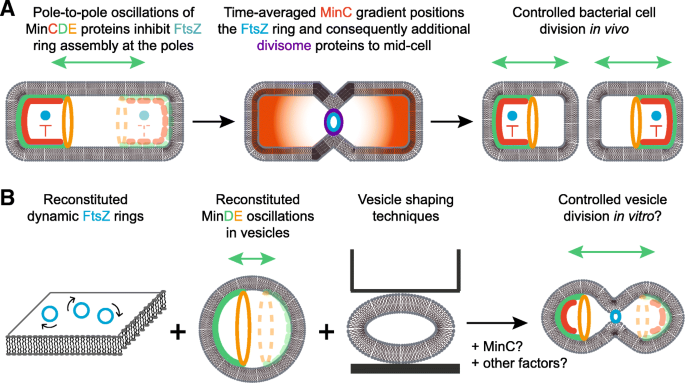


Synthetic Cell Division Via Membrane Transforming Molecular Assemblies Bmc Biology Full Text
E coli is the normal flora of the human body;•E coli • GramNegative Bacterial Cell Wall CPS EPS E coliCapsular Polysaccharide E coli K30 wt E coli K30 CPS minus E coli K30 CPS/LPS minus From"Current Topics in Microbiology and Immunology", 1990, Ed by K Jann and B Jann Examples of Capsular Polysaccharides fromE coli was discovered by Theodor Escherich in 15 after isolating it from the feces of newborns;



Peptidoglycan Remodeling Enables Escherichia Coli To Survive Severe Outer Membrane Assembly Defect Mbio



Bacterial Outer Membrane Constriction Egan 18 Molecular Microbiology Wiley Online Library
Harming the cell wall causes irreversible damage to the bacterium and eventually kills it Crucial factor For example, E coli are rod shaped bacteria often experimented with in the lab TheFIG 1 Incorporation of new cell wall in differently shaped bacteria Rodshaped bacteria such as B subtilis or E coli have two modes of cell wall synthesis new peptidoglycan is inserted along a helical path (A), leading to elongation of the lateral wall, and is inserted in a closing ringA peptidoglycan (PG) cell wall is an essential extracytoplasmic feature of most bacteria (Singer et al, 19);
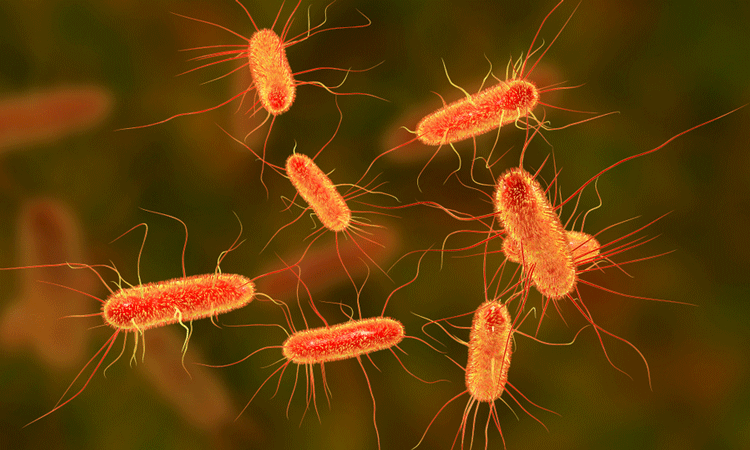


Bacteria Outer Membranes May Be Key To New Antibiotics
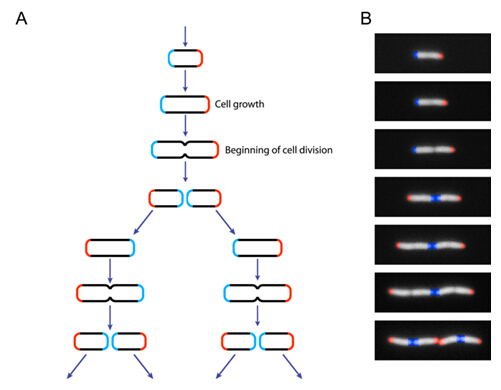


E Coli Antigens Creative Diagnostics
Abstract The major surface antigens of Escherichia coli are the cell wall lipopolysaccharides (LPS;112 (2)950–958 PMC free article NEUHAUS FC The enzymatic synthesis of DalanylDalanine IShapes are not directly dependent on the chemical composition of the structure in question ()For instance, E coli cells treated with penicillin can have the same shape as glass tubes manipulated by a glass blower (reference118 and references therein)



Uncovering The Activities Biological Roles And Regulation Of Bacterial Cell Wall Hydrolases And Tailoring Enzymes Journal Of Biological Chemistry



Stressed Out Bacteria Do Measure Up As They Grow E Coli Cells Constantly Mark Sites Where They Can Divide Once The Period Of Stress Is Over Amolf
E coli is a rodshaped bacterium The peptidoglycan cell wall is thin and multilayered There is a thin peptidoglycan layer placed between the inner cytoplasmic membrane, and the outer membrane The outer membrane is surrounded by the capsule layer which is composed of polysaccharidesCombined with heat shock which allows the cell wall to momentarily break open, allows the most amount of uptake of plasmid Then allowing the EColi to incubate allows satellite colonies to grow and express the GFP The picture above shows the E Coli with the one satellite colony expressing the GFPSince the cell wall is the target of most antibiotics, understanding how bacteria grow their cell walls may provide insight into more effective medicines Now, a team of researchers led by the Harvard John A Paulson School of Engineering and Applied Sciences (SEAS) has found that Escherichia coli (E coli) may use mechanical cues to keep their



Gtpase Activity Coupled Treadmilling Of The Bacterial Tubulin Ftsz Organizes Septal Cell Wall Synthesis Science



Figure 1 From Cell Wall Recycling And Synthesis In Escherichia Coli And Pseudomonas Aeruginosa Their Role In The Development Of Resistance Semantic Scholar
O antigens) and the capsular polysaccharides (PS;These data suggest that ClO 2 damage to E coli O157H7 is not primarily located at the cell wall and harms cells significantly different than NaOCl at comparable concentrations Introduction Chlorine in the form of sodium hypochlorite (NaOCl) or calcium hypochlorite Ca(OCl 2 ), is the most commonly used antimicrobial for produce washes andE coli are rodshaped bacterium that has an outer membrane consisting of lipopolysaccharides, inner cytoplasmic membrane, peptidoglycan layer, and an inner, cytoplasmic membrane Cell wall this structure is made of a thick layer of protein and sugar that prevents the cell from bursting Plasma membrane this structure is made of lipids and proteins and is used to control the movement of molecules in and out the cell
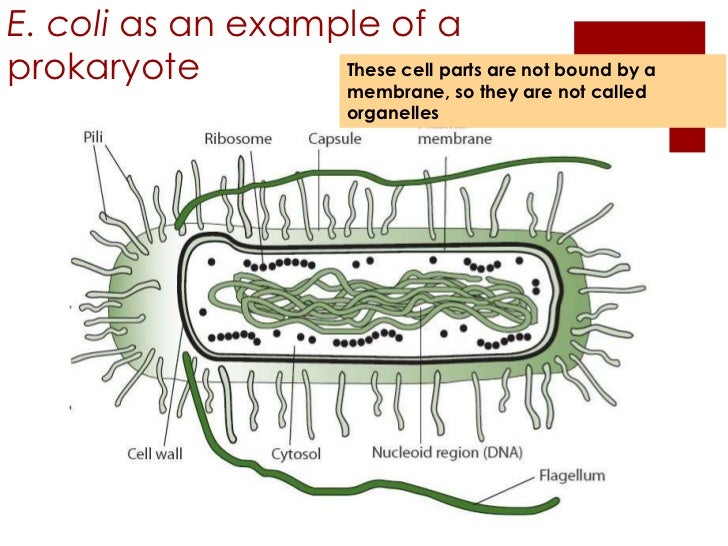


2 2 Prokaryotic Cells



Plasticity Of Escherichia Coli Cell Wall Metabolism Promotes Fitness And Antibiotic Resistance Across Environmental Conditions Elife
The primary habitat of E coli is in the gastrointestinal (GI) tract of humans and many other warmblooded animalsThe primary habitat of E coli is in the gastrointestinal (GI) tract of humans and many other warmblooded animals It is found in the mucus or the epithelium on the wall of the intestine Most commonly found in the colon of the large intestine Most of them are harmless and opportunisticEscherichia coli have strainspecific O lipopolysaccharide antigens on their cell wall (at least 1 O antigens are currently recognized) and flagella or H antigens if present (at least 53 H types are recognized) There are also numerous different capsular polysaccharide (K) antigens



Chapter 19 Bacteria And Viruses Ppt Video Online Download



Introduction To Competent Cells Goldbio
Miyakawa T, Matsuzawa H, Matsuhashi M, Sugino Y Cell wall peptidoglycan mutants of Escherichia coli K12 existence of two clusters of genes, mra and mrb, for cell wall peptidoglycan biosynthesis J Bacteriol 1972 Nov;E coli is a Gramnegative rodshaped bacteria, which possesses adhesive fimbriae and a cell wall that consists of an outer membrane containing lipopolysaccharides, a periplasmic space with a peptidoglycan layer, and an inner, cytoplasmic membrane Some strains are piliated and capable of accepting and transferring plasmid to and from other bacteriaIn Part 1, I introduced the types of cell walls out there and what they are made of – now it's time to learn how to get through them 1 Mechanical methods of cell disruption Mechanical cell disruption is really just that forcing open the cell wall and spilling the contents The advantage to mechanical disruption is that no chemicals are introduced that might interfere with the substance
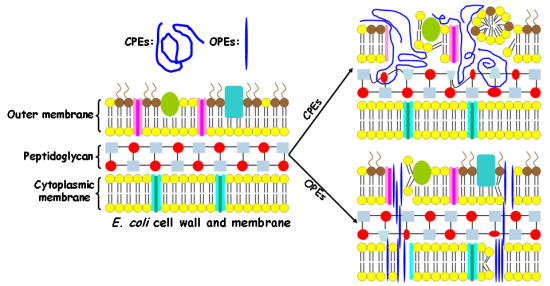


Polymers Free Full Text Dark Antimicrobial Mechanisms Of Cationic Phenylene Ethynylene Polymers And Oligomers Against Escherichia Coli Html
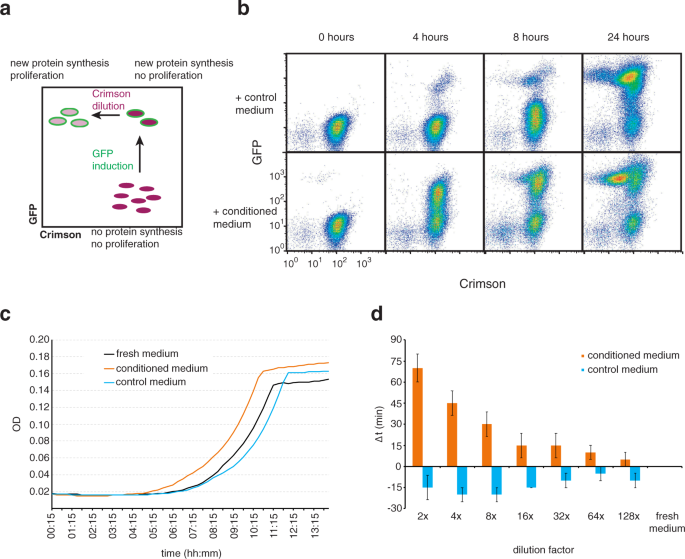


Muropeptides Stimulate Growth Resumption From Stationary Phase In Escherichia Coli Scientific Reports
Cells are typically rodshaped, and are about μm long and 025–10 μm in diameter, with a cell volume of 06–07 μm 3 E coli stains Gramnegative because its cell wall is composed of a thin peptidoglycan layer and an outer membraneFIG 1 Incorporation of new cell wall in differently shaped bacteria Rodshaped bacteria such as B subtilis or E coli have two modes of cell wall synthesis new peptidoglycan is inserted along a helical path (A), leading to elongation of the lateral wall, and is inserted in a closing ring around the future division site, leading to the formation of the division septum (B)Immunolabeling showed that lysozyme binds to the outer cell membrane and may penetrate the membrane, reaching the periplasmic space and possibly the inner cell membrane The ultrastructural findings and the results of antibacterial assays suggest that lysozyme is bactericidal for E coli but is not able to induce disintegration



Increasing The Permeability Of Escherichia Coli Using Mac Scientific Reports



Micrograph Of The Cell Wall Of E Coli Compared To That Of A Download Scientific Diagram
•E coli • GramNegative Bacterial Cell Wall CPS EPS E coliCapsular Polysaccharide E coli K30 wt E coli K30 CPS minus E coli K30 CPS/LPS minus From"Current Topics in Microbiology and Immunology", 1990, Ed by K Jann and B Jann Examples of Capsular Polysaccharides fromBacterial Cell wall Structure, Composition and Types Cell wall is an important structure of a bacteria It give shape,rigidity and support to the cell On the basis of cell wall composition, bacteria are classified into two major group ie Gram Positive and gram negative Types of cell wall 1 Gram positive cell wall Cell wall composition ofThe niche of E coli depends upon the availability of the nutrients within the intestine of host organisms;



E Coli Engineered To Grow On Co2 And Formic Acid As Sole Carbon Sources Eurekalert Science News


Differential Actions Of Chlorhexidine On The Cell Wall Of Bacillus Subtilis And Escherichia Coli
The major surface antigens of Escherichia coli are the cell wall lipopolysaccharides (LPS;Biology Of E Coli E coli (Escherichia coli) are a small, Gramnegative species of bacteriaMost strains of E coli are rodshaped and measure about μm long and 0210 μm in diameterThey typically have a cell volume of 0607 μm, most of which is filled by the cytoplasm Since it is a prokaryote, E coli don't have nuclei;Enterohemorrhagic E coli (EHEC), such as E coli 0157H7, produce a shigalike toxin that kills epithelial cells of the large intestines causing hemorrhagic colitis, a bloody diarrhea In rare cases, the shigatoxin enters the blood and is carried to the kidneys where, usually in children, it damages vascular cells and causes hemolytic uremic



Overview Of Cell Wall Synthesis In E Coli A The Synthesis Of Pg Download Scientific Diagram



Ib Biology 2 2 1 How To Draw E Coli Youtube
Escherichia coli is shaped in the form of a rod It is a gramnegative bacterium and it contains peptidoglycan which is a thin and outer membrane Ecoli is considered a facultative thermophile, which means that it can survive under high temperatures as well as moderate temperatures It is present in most mammals particularly in the gut where it performs important functions like aiding inThese data suggest that ClO 2 damage to E coli O157H7 is not primarily located at the cell wall and harms cells significantly different than NaOCl at comparable concentrations Introduction Chlorine in the form of sodium hypochlorite (NaOCl) or calcium hypochlorite Ca(OCl 2 ), is the most commonly used antimicrobial for produce washes andThe LPS are transported to the outer membrane, where they reside, whereas the PS are secreted into capsules



Pin On Study



How E Coli Cells Work In The Human Gut Uconn Today
The structure of peptidoglycans of Escherichia coli and Bacillus subtilis is similar except for a few minor modifications, but murein (cell wall) structures are extremely different because the major cell wall constituents, anionic polymers, are not attached to peptidoglycans of E coli but are attached to those of B subtilis6) Subsection "Identification of pH specialist cell wall synthases and hydrolases", first paragraph commensal E coli (MG1655 is not even that) are not specialized for growing in urine UPEC strains carry ~2,000 genes more than MG1655, so this leaves quite some room for other alkalinespecialized cell wall enzymesCell walls also contain fibers of teichoic acid, which facilitate attachment of bacteria to host cell membranes (eg mucosal cells), and when released can induce septic shock, similar to that produced by endotoxin (LPS) released by gramnegative bacteria
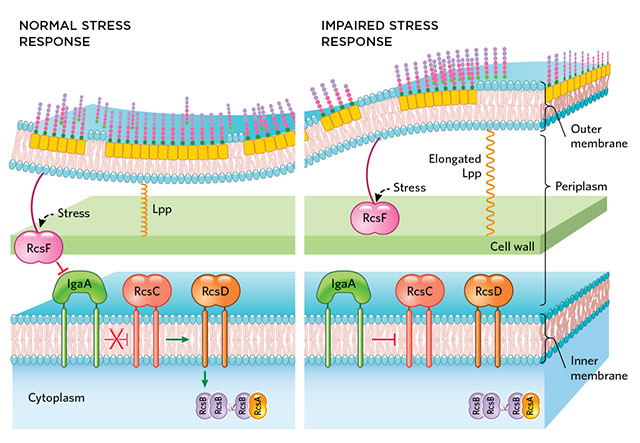


Bacterial Cell Envelope Size Is Key To Membrane Stress Response The Scientist Magazine



Bacteriolyses Of Bacterial Cell Walls By Cu Ii And Zn Ii Ions Based On Antibacterial Results Of Dilution Medium Method And Halo Antibacterial Test
The end result of Escherichia coli morphogenesis is a cylindrical tube with hemispherical caps How does this shape come about?Harming the cell wall causes irreversible damage to the bacterium and eventually kills it Crucial factor For example, E coli are rod shaped bacteria often experimented with in the lab TheGramnegative bacteria such as Escherichia coli are surrounded by an outer membrane, which encloses a peptidoglycan layer Even if thinner than in many Grampositive bacteria, the peptidoglycan in E coli allows cells to withstand turgor pressure in hypotonic medium In hypertonic medium, E coli treated with a cell wall synthesis inhibitor such as penicillin G form walldeficient cells



Outer Membrane Permeabilization By The Membrane Attack Complex Sensitizes Gram Negative Bacteria To Antimicrobial Proteins In Serum And Phagocytes Biorxiv
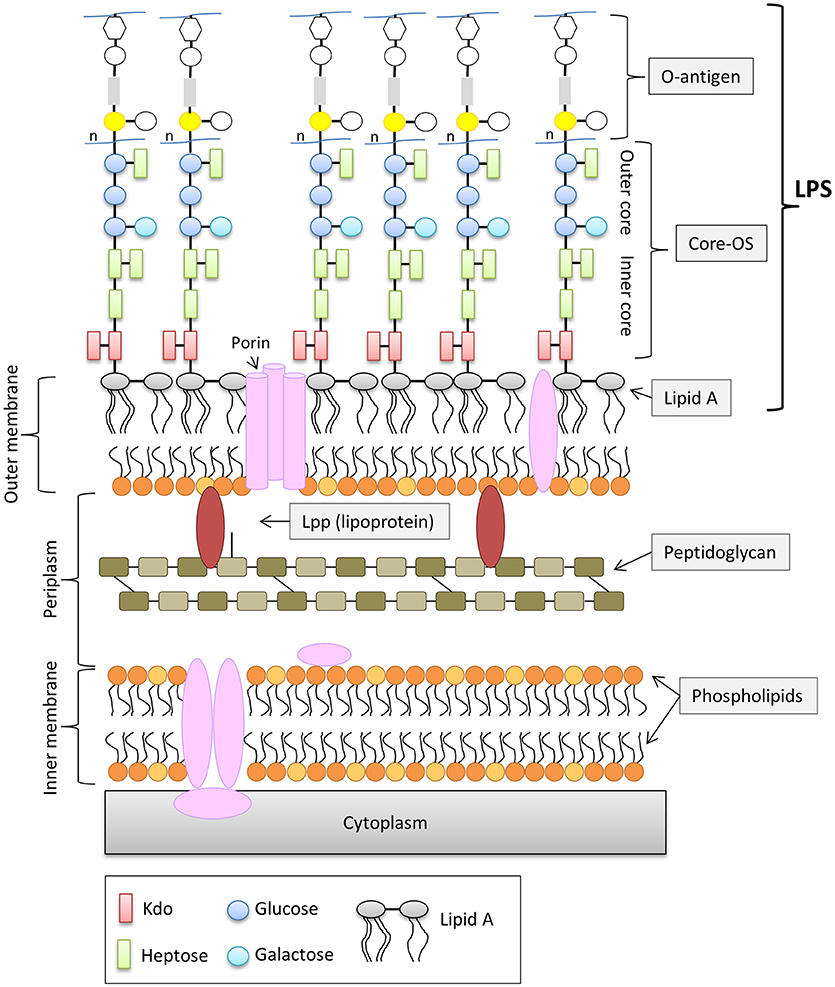


Frontiers The Role Of Outer Membrane Proteins And Lipopolysaccharides For The Sensitivity Of Escherichia Coli To Antimicrobial Peptides Microbiology
O antigens) and the capsular polysaccharides (PS;Escherichia coli is shaped in the form of a rod It is a gramnegative bacterium and it contains peptidoglycan which is a thin and outer membrane Ecoli is considered a facultative thermophile, which means that it can survive under high temperatures as well as moderate temperatures It is present in most mammals particularly in the gut where it performs important functions like aiding in
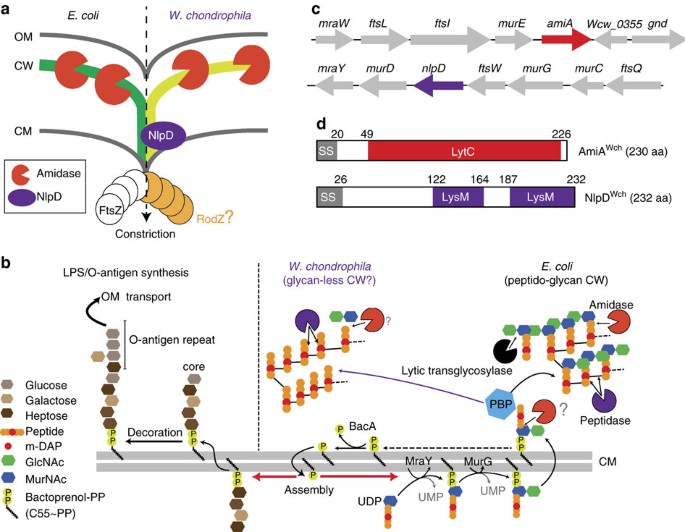


Ftsz Independent Septal Recruitment And Function Of Cell Wall Remodelling Enzymes In Chlamydial Pathogens Nature Communications



Figure 1 From Mecillinam Resistance In E Coli Fitness Compensation And Resistance In Different Environments Semantic Scholar



Natural And Engineered Bacterial Outer Membrane Vesicles Springerlink
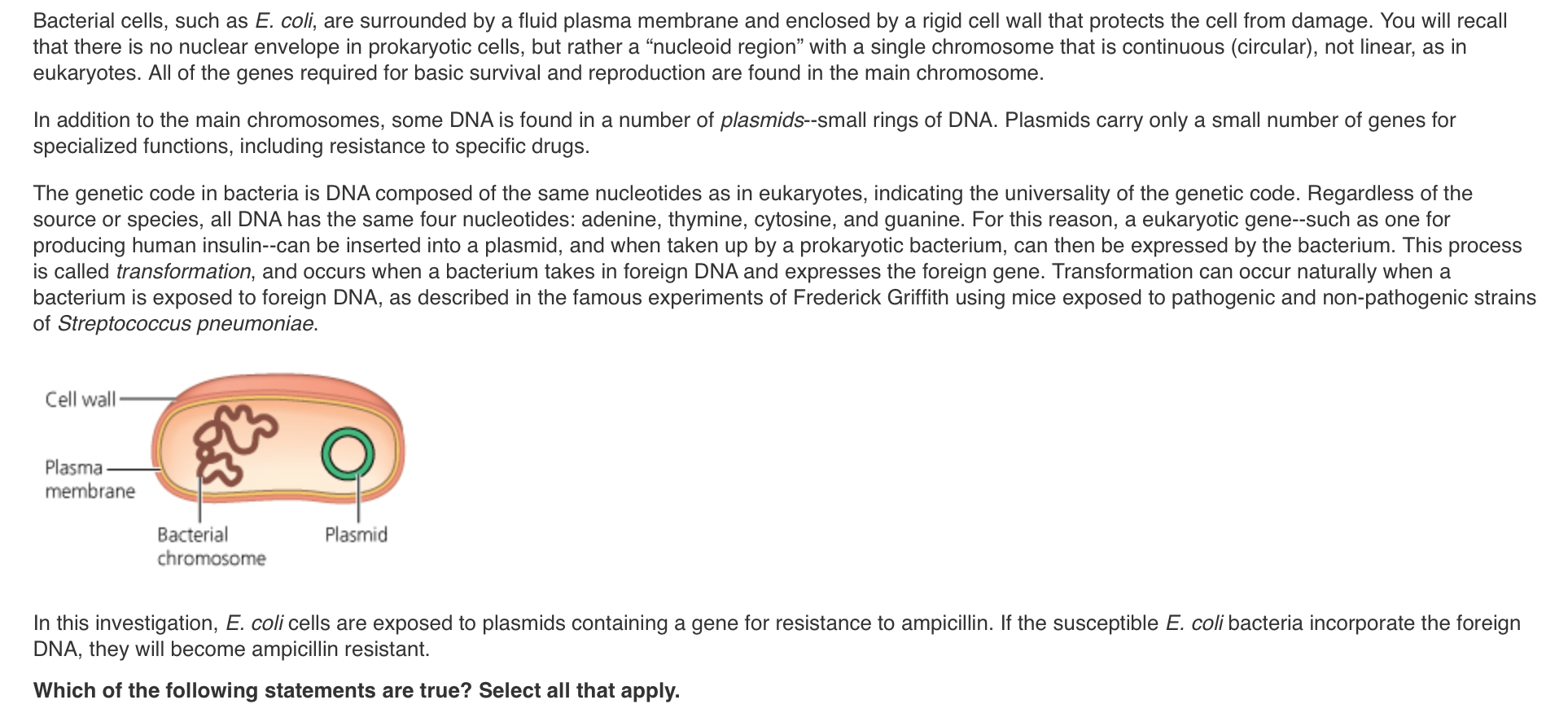


Solved Bacterial Cells Such As E Coli Are Surrounded B Chegg Com
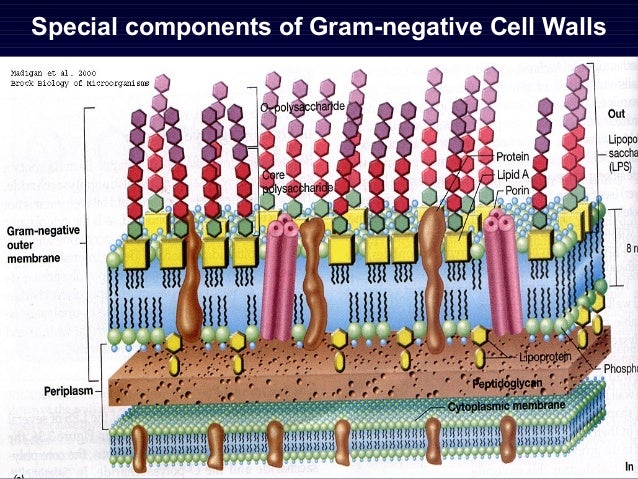


Chapter1 Cell Structure Of Bacteria



Bacterial Cell Wall Quality Control During Environmental Stress Mbio



Team Cornell Demonstrate Igem Org
:max_bytes(150000):strip_icc()/gram_negative_bacteria-5b7f308646e0fb002cbcdc5d.jpg)


Gram Positive Vs Gram Negative Bacteria


E Coli Chemotaxis



Bacteria 101 Cell Walls Gram Staining Common Pathogens Tusom Pharmwiki



Peptidoglycan Hydrolase Of An Unusual Cross Link Cleavage Specificity Contributes To Bacterial Cell Wall Synthesis Pnas



Molecular Mechanisms Of Membrane Targeting Antibiotics Sciencedirect
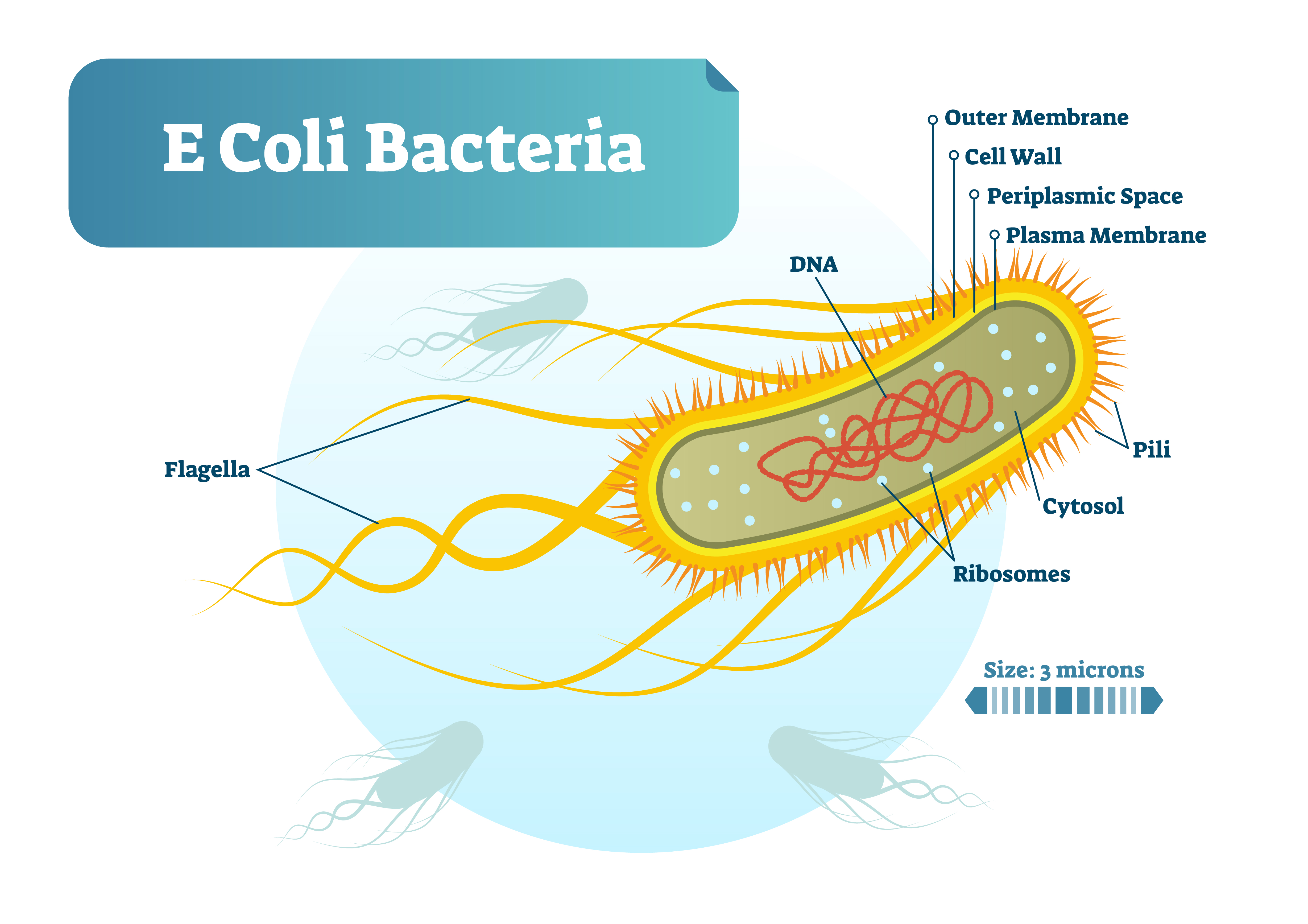


E Coli Outbreak Grows In Georgia But Source Remains A Mystery



Peptidoglycan Chain Synthesis Of The E Coli Cell Wall Download Scientific Diagram



Plasticity Of Escherichia Coli Cell Wall Metabolism Promotes Fitness And Antibiotic Resistance Across Environmental Conditions Elife



The Outer Membrane Is An Essential Load Bearing Element In Gram Negative Bacteria Nature


Structure And Function Of Bacterial Cells
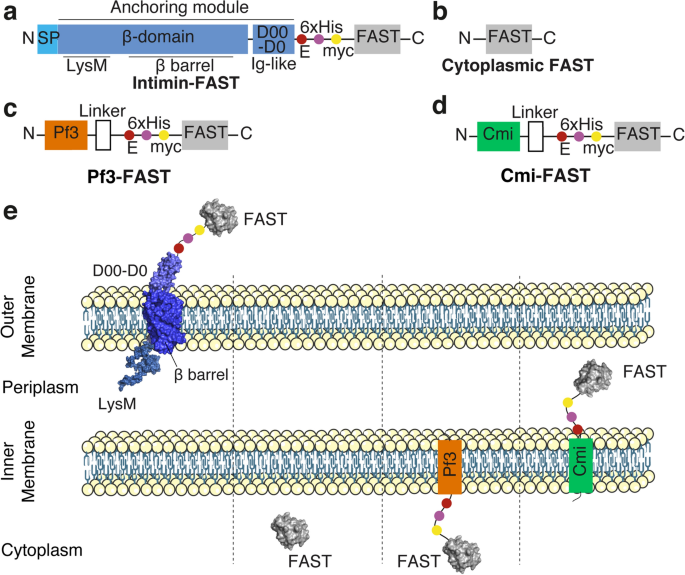


Visualizing The Dynamics Of Exported Bacterial Proteins With The Chemogenetic Fluorescent Reporter Fast Scientific Reports
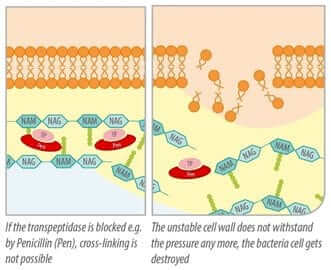


Phytomolecules A Tool Against Antibiotic Resistant E Coli



Pin On Photoshop Png


Bacterial Outer Membrane Wikipedia



Peptidoglycan Remodeling Enables Escherichia Coli To Survive Severe Outer Membrane Assembly Defect Mbio



Bending Forces Plastically Deform Growing Bacterial Cell Walls Pnas


Nlpd Links Cell Wall Remodeling And Outer Membrane Invagination During Cytokinesis In Escherichia Coli



Isolation And Characterization Of The Outer Membrane Of Escherichia Coli With Autodisplayed Z Domains Sciencedirect



For A Gram Negative Bacterium Such Escheri Clutch Prep



Figure 1 From Advances In Understanding Bacterial Outer Membrane Biogenesis Semantic Scholar


Structure And Function Of Bacterial Cells


What Is The Macromolecular Composition Of The Cell



A Dynamically Assembled Cell Wall Synthesis Machinery Buffers Cell Growth Pnas
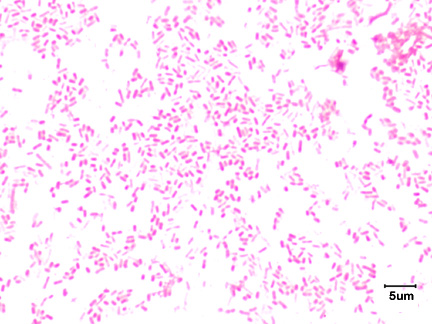


2 3b The Gram Negative Cell Wall Biology Libretexts



Bacteria 101 Cell Walls Gram Staining Common Pathogens Tusom Pharmwiki


New Page 1



Converting Escherichia Coli Into An Archaebacterium With A Hybrid Heterochiral Membrane Pnas



Mreb Pilot Or Passenger Of Cell Wall Synthesis Trends In Microbiology


Plos Genetics Nlpd Links Cell Wall Remodeling And Outer Membrane Invagination During Cytokinesis In Escherichia Coli



4 Bacteria Cell Walls Biology Libretexts



A Structure Of The E Coli Bacterial Cell Envelope Showing The Outer Download Scientific Diagram



Engineering Cell Wall Synthesis Mechanism For Enhanced Phb Accumulation In E Coli Sciencedirect



Plasticity Of Escherichia Coli Cell Wall Metabolism Promotes Fitness And Antibiotic Resistance Across Environmental Conditions Elife


Escherichia Coli



Reducing Systems Protecting The Bacterial Cell Envelope From Oxidative Damage Sciencedirect


What Is The Thickness Of The Cell Membrane



Escherichia Coli Cell Page 1 Line 17qq Com


Prokaryotic Vs Eukaryotic Cells By Jacob Straka



E Coli Cell Wall Structure Page 1 Line 17qq Com
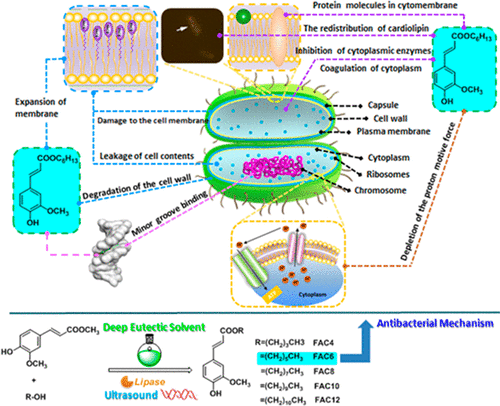


Alkyl Ferulate Esters As Multifunctional Food Additives Antibacterial Activity And Mode Of Action Against Escherichia Coli In Vitro Journal Of Agricultural And Food Chemistry X Mol



Micr 454l Emerging And Re Emerging Infectious Diseases Lecture 6 E Coli Dr Nancy Mcqueen Dr Edith Porter Ppt Download



Cell Wall Structure Of E Coli And B Subtilis Semantic Scholar



Baicalin Inhibits Escherichia Coli Isolates In Bovine Mastitic Milk And Reduces Antimicrobial Resistance Journal Of Dairy Science



Cell Shape And Cell Wall Organization In Gram Negative Bacteria Pnas
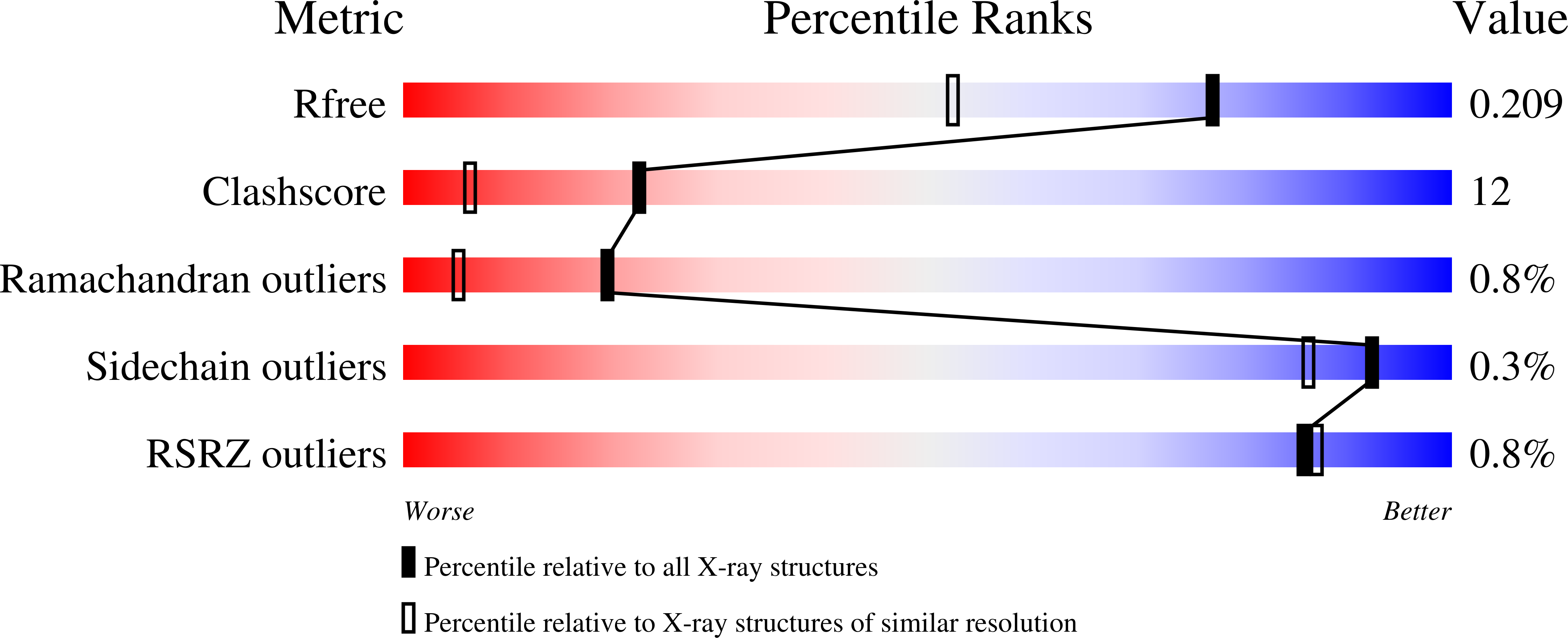


Rcsb Pdb 4bh5 Lytm Domain Of Envc An Activator Of Cell Wall Amidases In Escherichia Coli



Biosynthesis Of C 55 P And Cell Wall Peptidoglycan In E Coli Upps Download Scientific Diagram



Asm E Coli Cell Wall Enzymes Have Varying Optima Uphold Shape In Diff Conditions Mbiojournal T Co Uv7dwgnrwz


2 2 Prokaryotic Cells Bioninja



Plasticity Of Escherichia Coli Cell Wall Metabolism Promotes Fitness And Antibiotic Resistance Across Environmental Conditions Elife



Edta Weakens The E Coli Cell Envelope A Length Of The Cell Wall Download Scientific Diagram
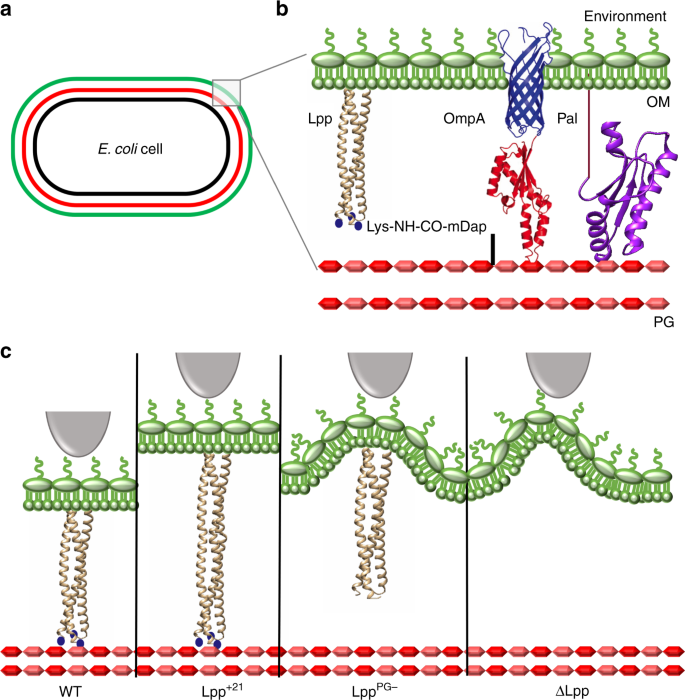


Lipoprotein Lpp Regulates The Mechanical Properties Of The E Coli Cell Envelope Nature Communications



Bacteria Cell Walls General Microbiology



Escherichia Coli Wikipedia



The Effect Of Uv Light On The Cacl2 Peg 3350 Dmso Transformation Buffer For Crispr Cas9 Edited E Coli Young Scientists Journal



Introduction To Competent Cells Goldbio



Outer Membrane Permeabilization By The Membrane Attack Complex Sensitizes Gram Negative Bacteria To Antimicrobial Proteins In Serum And Phagocytes Biorxiv
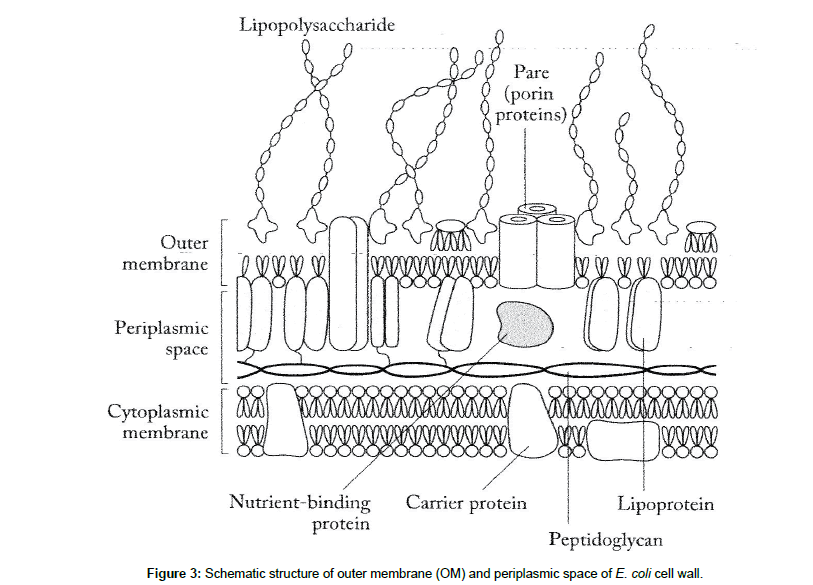


Antibacterial Mechanism Of Bacteriolyses Of Bacterial Cell Walls By Zinc Ion Induced Activations Of Pgn Autolysins And Dna Damages Scitechnol



Full Text The Resistance Mechanism Of Escherichia Coli Induced By Ampicillin In Idr



Lipoprotein Lpp Regulates The Mechanical Properties Of The E Coli Cell Envelope Nature Communications


コメント
コメントを投稿